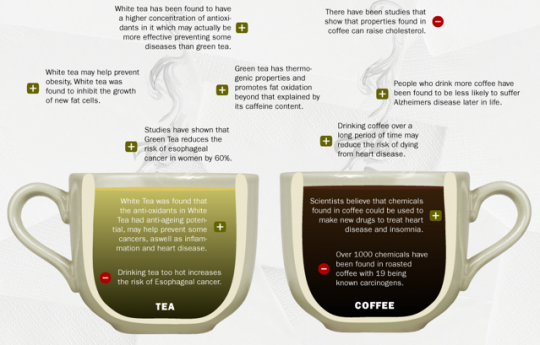Editor’s Note: This website is not designed to, and should not be construed to, provide medical advice, professional diagnosis, opinion or treatment to you or any other individual, and is not intended as a substitute for medical or professional care and treatment. For serious.
~
A Food Revolution Starts with these 7 Simple Swaps
To reverse our diabesity epidemic, we need nothing less than a food revolution. The most powerful thing we can do for our health is to take back our kitchens and cook real food.
Not everyone is ready for or wishes to undertake such a dramatic, sweeping change. That doesn’t mean we need to take an either-or approach and succumb to processed, sugary foods that contribute to inflammation, obesity and chronic disease.
If we’re reluctant to make a complete kitchen overhaul, we can take action and transform our diet with a few simple swaps. These seven replacements can create dramatic changes in our diet without feeling restrictive or as if we’re eating “diet food.”
- Replace breakfast with a protein smoothie. Most people start the day incorrectly, eating dessert for breakfast or skipping this most important meal altogether. A protein shake is a simple solution that stokes our metabolic fire and burns more calories during the day, accelerating weight loss. We can load a filling, satisfying, appetite-controlling shake with superfoods, proteins, healthy fats and phytonutrients that will keep steady blood sugar and energy throughout the day. Grab some of my favorite shake recipes here.
- Upgrade meat and eggs. Conventional meat and eggs often come loaded with hormones and antibiotics. Look for animal products that are pasture-raised, grass-fed and free of antibiotics, hormones and pesticides. Go on a low-mercury diet by sticking with small, wild or sustainably farmed fish. Please eat the whole egg—yolks contain important vitamins and fats needed for brain and mood function.
- Replace gluten starches with green vegetables. Gluten is a protein found in wheat, barley, rye, spelt and oats. While humans began cultivating grains 10,000 years ago, about 50 years ago the type of gluten changed as we created new strains of wheat (genetically altered dwarf strains I call Frankenwheat). This change created a veritable epidemic of problems, including a 400 percent increase in celiac disease and a dramatic rise in gluten sensitivity, affecting about eight percent of the population. An easy way to go gluten free is to simply substitute another leafy or cruciferous vegetable for what would normally constitute a starch on our plate. We can easily do this when dining out. If our entree includes risotto or couscous, we can ask our server to substitute sautéed spinach or half a sweet baked potato.
- Replace bad oils for good oils. Corn, soybean, canola and sunflower oils contain inflammatory omega-6 fats and currently make up 10 percent of our calories. Instead, we should stick to extra virgin olive oil or coconut oil. Extra virgin olive oil contains polyphenols, which are powerful anti-inflammatory and antioxidant compounds. Coconut butter or oil is a powerful cellular fuel and also contains anti-inflammatory fats such as lauric acid, the same fat found in breast milk.
- Replace unhealthy fats for healthy fats. The standard American diet (SAD, indeed) contains a massive amount of pro-inflammatory fats that keep us sick, tired, fat and inflamed. Make the leap to anti-inflammatory healthy fats. Have one serving of a healthy fat at each meal. That might be ¼ avocado, wild-caught salmon, grass-fed beef or nut or seed butter such as almond or cashew.
- Replace sugary snacks with nuts. Nuts can help reverse diabesity and provide numerous other health benefits. They provide a great source of protein, fiber, minerals and good fats. Buy raw or lightly toasted unsalted nuts. Avoid nuts that are fried or cooked in oils. The best are almonds, walnuts, macadamia nuts, hazelnuts and pecans. Stick with one or two handfuls for a snack once or twice a day. Remember a serving is 10 to 12 nuts or a good handful.
- Replace coffee for green tea. Coffee can interfere with our liver’s detoxification mechanisms, makes us less insulin sensitive, and its caffeine content revs up our stress hormones. Make the switch to green tea and stick to one to three cups a day. The beneficial antioxidants will override green tea’s small amount of caffeine.
I’m sure you can think of plenty more simple healthy swaps to bring dramatic health change without much effort. Share your top one below or on my Facebook fan page.
~
References
Lovallo WR, et al. Caffeine stimulation of cortisol secretion across the waking hours in relation to caffeine intake levels. Psychosom Med. 2005 Sep-Oct;67(5):734-9.
Rubio-Tapia A, et al. Increased prevalence and mortality in undiagnosed celiac disease. Gastroenterology. 2009 Jul;137(1):88-93. doi: 10.1053/j.gastro.2009.03.059. Epub 2009 Apr 10.
Tunnicliffe JM, Shearer J. Coffee, glucose homeostasis, and insulin resistance: physiological mechanisms and mediators. Appl Physiol Nutr Metab. 2008 Dec;33(6):1290-300. doi: 10.1139/H08-123.
Yang D, et al. The antimicrobial activity of liposomal lauric acids against Propionibacterium acnes. Biomaterials. 2009 Oct;30(30):6035-40. doi: 10.1016/j.biomaterials.2009.07.033. Epub 2009 Aug 8.
http://www.med.umich.edu/umim/food-pyramid/eggs.html
http://www.biomedcentral.com/1741-7015/12/78
~
Author: Mark Hyman
Editor: Rachel Nussbaum
Photo: Google Images for Reuse
~



Read 9 comments and reply